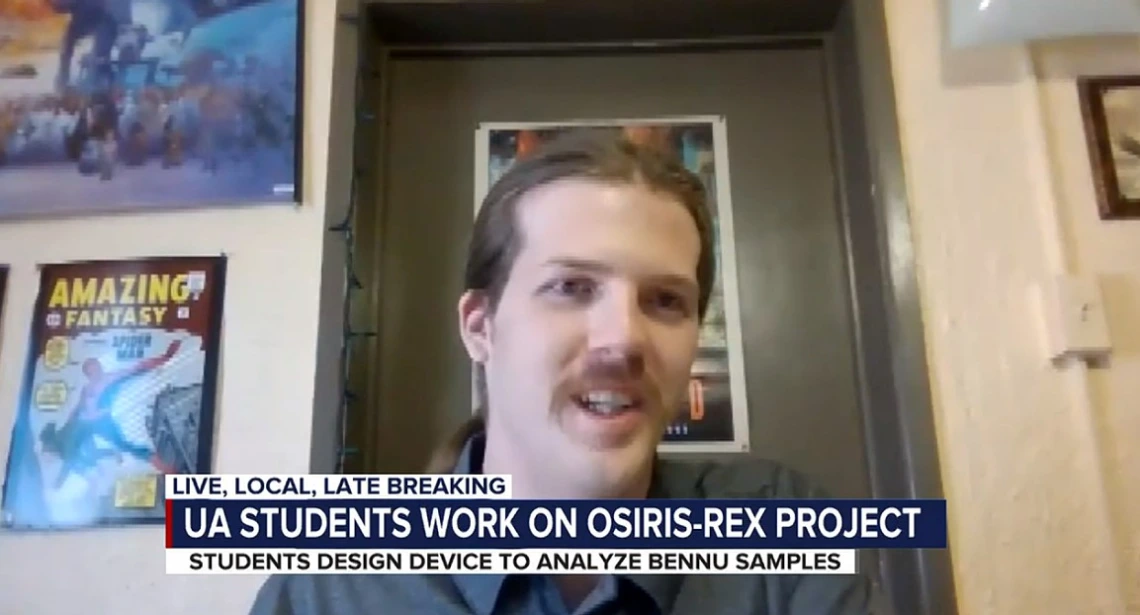UA Students Design Device to Analyze Asteroid Bennu Samples

After nearly five years in space, NASA’s OSIRIS-REx spacecraft is on its way to Earth with samples of rocks and dust from asteroid Bennu.
Scientists said they could study these precious samples for years and would not even scratch the surface of the mysteries locked inside, which is why it is so important to analyze the samples carefully.
That is where a team of senior engineering students at the University of Arizona comes in.
The team designed a device to measure the samples’ thermal conductivity without altering them in any way.
Zane Craddock is the team’s lead for the project.
“It has to be done inside a vacuum environment. There’s not even an atmosphere because the air around us is considered contamination for it. So this is extremely challenging,” Craddock said.
Craddock said the device consists of two aluminum hemispheres.
“On the bottom, we set that to a known temperature and on the top, we apply a certain amount of power. Depending on the thermal conductivity of the sample, that is in between the two hemispheres, the top hemisphere will reach a certain temperature or not.”
Craddock said the temperature of the top hemisphere will tell them how thermally conductive the sample is.
“We actually also had the opportunity to be in the meetings with the Japanese Space Agency and they just completed a very similar mission where they collected asteroid samples. They have a team of PhD scientists over there trying to create a device to measure the thermal conductivity of their samples,” Craddock said.
Craddock said the teams had the opportunity to brainstorm.
This impressive work helped team member Shawn Cherian land a job at Honeywell.
“The work I will be doing there is very, very similar to the work I did on this project,” Cherian said.
While the samples are on their way to Earth, they aren’t expected to arrive until September 2023, so these seniors will have to hand their project off, but it’s safe to say their work is in good hands.
“It is now getting handed over to literal NASA scientists who will be using it,” Craddock said.
This team’s work earned them the Best Implementation of Analytically Driven Design at the 2021 Craig M. Berge Engineering Design Day.
The award recognizes a design that could only have been arrived at after careful study and creative application of physics.
View the news coverage of this project at KOLD News 13.

